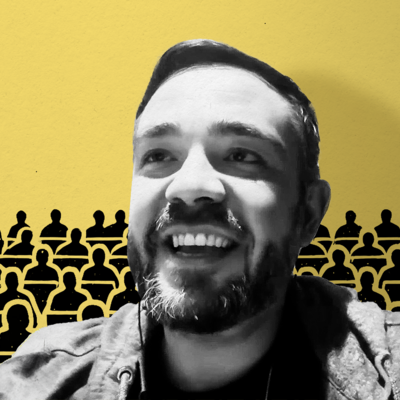
Sponsored By: Growth School
Free AI & ChatGPT Workshop (Holiday Sale)
Join this 3-hour power-packed workshop (worth $99) for FREE and learn hacks to 10X work output and grow your business.
Click here to register (FREE for First 100)
With AI & Chatgpt, you will be able to:
- Make smarter decisions based on data in seconds using AI
- Automate daily tasks and increase productivity & creativity
- Skyrocket your business growth by leveraging the power of AI
- Save 1000s of dollars by using ChatGPT to simplify complex problems
TL;DR: Today we’re releasing a new episode of our podcast How Do You Use ChatGPT? I go in depth with Nathan Labenz, founder of the AI video creation tool Waymark, host of the Cognitive Revolution podcast, and GPT-4 red teamer (one of the people OpenAI tapped to test the new ChatGPT model). Watch on X, YouTube, or Spotify, or listen on Apple Podcasts.
Sometimes ChatGPT is a copilot, sitting beside you, taking directions, and guiding you as you fly through your work. At other times, it’s something entirely different—a subordinate of sorts. It’s not just an assistant or a companion, but a trusted deputy, someone—or something—to which you can take a moment to explain exactly what you want, and it’ll go off and handle it for you.
That’s how Nathan Labenz, my guest on this week’s podcast, sees the twin roles that ChatGPT currently plays in our work lives. In this episode, Labenz—the founder of the AI video company Waymark and the host of his own podcast called The Cognitive Revolution, which will also air a version of this conversation—uses ChatGPT to write complex code in languages he’s unfamiliar with. Walking me through his process, he says he’s able to move through a project in two to three hours rather than two to three days.
When ChatGPT simply acts like a copilot, we’re able to save a lot of time. But when we can delegate tasks to it, we’re moving closer to the eventual promise of AI: just like machines replaced muscles during the Industrial Revolution, AI will one day replace brainpower. That’s not to say that, with AI at our fingertips, we’ll necessarily become lazy, but if AI can handle some of the drudgery of everyday work, then maybe we can find the extra time for work that’s more creative, thoughtful, and, dare I say, human.
Here’s a taste of what we talk about. Read on for more analysis from me at the bottom.
- Delegating and co-piloting. We discuss all the ways AI can assist us now and in the future. What’s still missing, Nathan thinks, is the middle ground between co-piloting and delegating tasks. He calls it ad-hoc delegation. “Ideally, I would like to delegate more and bigger subtasks to the AI on the fly,” he tells me. “And that's where we're not quite there yet.”
- Building a prompt coach. For one of his ventures, Nathan is building a program to help train human assistants to work directly with AI. Enter the prompt coach, a tool to direct efficient use of LLM-powered chatbots. “We still see that assistants sometimes need coaching on how to effectively prompt a language model,” he says, walking us through how he built his app.
- Withholding instruction. One of the pitfalls of human-AI interaction is that sometimes we, as humans, are too specific, Nathan says. That precision can prevent the kind of analysis he wants out of ChatGPT. What’s better? Nathan explains his triple-A approach: “Analysis before answer always.”
- Removing drudgery from work. Sometimes Nathan knows what he wants, but he doesn’t really know how to do it. That’s where ChatGPT comes in. He explains what he wants to the chatbot and, in turn, the chatbot walks him through how to do it in real time. He says it “liberates” him from that frustration and eliminates drudgery.
- AI’s time horizon of knowledge. We talk about the benefits and shortcomings of ChatGPT’s default setting as a contextless agent, starting with a clean slate for each chat session. I share my preference for custom instructions, and Nathan provides some examples of when a lack of context is preferable.
- Shopping for a used car. While we mostly discuss ChatGPT, Nathan brings in a tool he prefers called Perplexity, which he finds is more reliable than ChatGPT when looking for answers to factual questions. Think of it as a closer-but-not-perfect alternative to Google Search, he says. With this assistant, Nathan walks us through his process for one of the most daunting tasks known to humankind: buying a used car on the internet.
You can watch the episode on Twitter/X, Spotify, or YouTube. Links and timestamps are below:
- Watch on X
- Listen on Spotify (make sure to follow to help us rank!)
- Watch on YouTube
- Listen on Apple Podcasts
Timestamps:
- Intro 1:03
- Copilot mode and delegation mode 1:46
- ChatGPT for coding 8:53
- Building a “prompt coach” 12:21
- Best practices for talking to ChatGPT 24:32
- The “dance” between you and AI 38:47
- AIs that know you 40:41
- ChatGPT as a “thought partner” 45:17
- Using Perplexity AI instead of a search engine 56:27
- What’s ahead for AI 1:05:00
What do you use ChatGPT for? Have you found any interesting or surprising use cases? We want to hear from you—and we might even interview you. Reply here to talk to me!
Miss an episode? Catch up on my recent conversations with Notion engineer Linus Lee, writer Nat Eliason, and Gumroad CEO Sahil Lavingia, and learn how they use ChatGPT.
My take on this show and the episode transcript is below for paying subscribers.
The Only Subscription
You Need to
Stay at the
Edge of AI
The essential toolkit for those shaping the future
"This might be the best value you
can get from an AI subscription."
- Jay S.
Join 100,000+ leaders, builders, and innovators

Email address
Already have an account? Sign in
What is included in a subscription?
Daily insights from AI pioneers + early access to powerful AI tools










